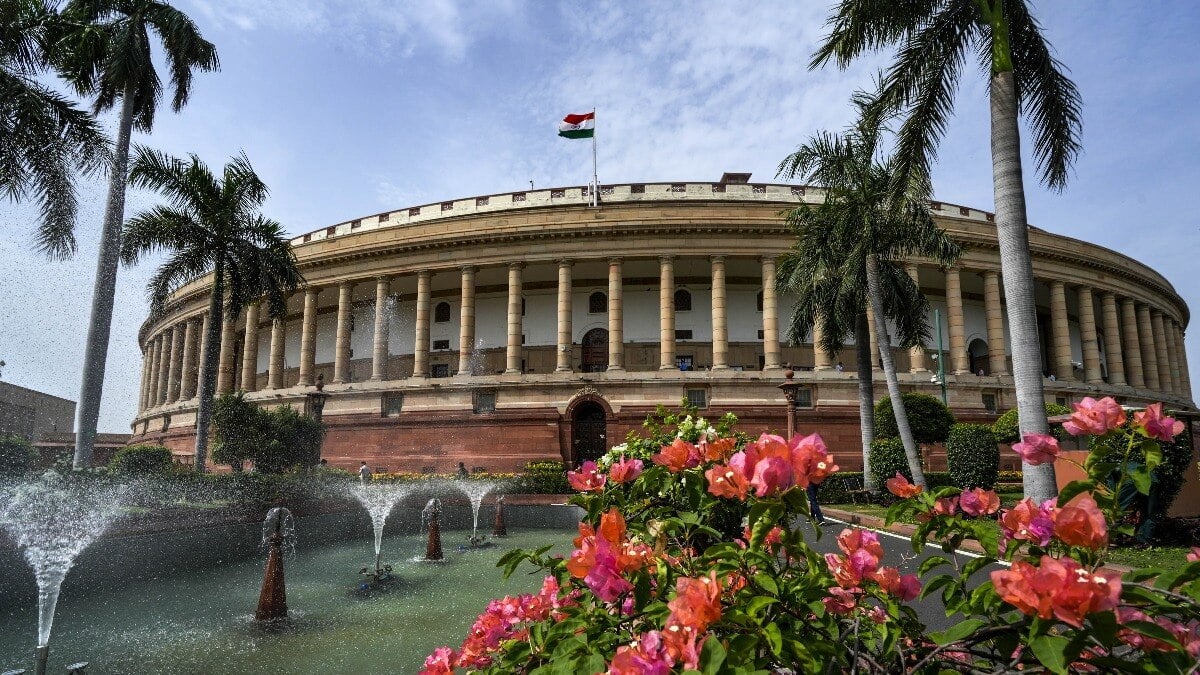Adaptation and Resilience, Climate Policy
|2025
Building a Climate-Ready State

Summary
Transforming into a low-carbon, climate-resilient society presents complex governance challenges for India. How should the Indian state approach these climate governance challenges? What institutional models could be effective and what lessons can be drawn from global experiences? Our work addresses these questions and offers governance frameworks to guide policymakers, researchers, and civil society organisations.
As governments at different levels in India’s federal structure navigate climate related concerns, they need to develop knowledge resources and institutional processes that facilitate the creation of actionable, long-term strategies. To implement these strategies effectively, they need coordination mechanisms that align divergent interests and efforts across national and sub-national levels. Moreover, governance systems must be equipped to navigate the sensitive – and often time-consuming – task of mediating between state and society, while at the same time, respond appropriately to imminent threats.
At SFC, we document how India’s policies, institutions, and legal structures are responding to climate change and its growing impacts. We bring insights into state-level climate action planning, drawing from our experience in conducting comparative analyses of international climate laws, assessing state action plans for climate change, and proposing guiding principles for a national framework law. Our work also looks at how the Indian courts are engaging with climate concerns. Below is a detailed list of our research and publications in these areas.
Reimagining policies and institutions to address climate governance
- Domesticating Climate Change: The Evolution of Indian Climate Politics and Policy, Economic & Political Weekly, January 2025
By Navroz K Dubash
Climate change considerations are increasingly being internalised, or domesticated in India’s development decision-making. This paper examines how political narratives linking climate change and development have emerged over the past decade, explores top-down approaches to climate policy, discusses key sectoral shifts and economy-wide approaches, and ends with a discussion of what mainstreaming climate change may mean for the Indian state. Through this analysis, the paper argues for taking seriously the linkage between climate change and development, but in a way that engages with their complex linkages. - Climate Change: Policy, Institutional, and Legal Framework in the book ‘The Oxford Handbook of Environmental and Natural Resources Law in India’, July 2024
By Navroz K Dubash, Aditya Valiathan Pillai, Anirudh Sridhar
Transforming towards a low-carbon, climate-resilient society will require reimagining existing governance arrangements. This chapter in ‘The Oxford Handbook of Environmental and Natural Resources Law in India‘ documents how India’s policies, institutions, and legal structures have changed in response to climate change. - Climate Governance and Federalism in India, published in the book ‘Climate Governance and Federalism: A Forum of Federations Comparative Policy Analysis’, Cambridge University Press, May 2023
By Navroz K Dubash, Aditya Valiathan Pillai
India’s federal structure is unsuited to the localized demands of climate governance. It is highly centralized, with a federal government that enjoys fiscal, bureaucratic, and jurisdictional powers greater than in more classical, decentralized federations. Indian states, however, are responsible for several areas crucial to climate action, from water and health to the emissions-intensive electricity sector. This makes elaborate forms of cooperation between the two levels essential. In this chapter, the authors show that the federal system has organically begun evolving some institutions and practices to keep up with the demands of climate change, including climate-specific financing and capacity flowing from the centre to the states, and instances of bottom-up experimentation and learning. But these developments are uncoordinated and lack strategic direction; policies appear and fade away with regularity, unpegged to long-term goals or a plan to rectify top-heaviness in Indian climate federalism. - Reimagining Indian federalism in the climate crisis, Ideas for India, February 2022
By Aditya Valiathan Pillai, Navroz K Dubash, Parth Bhatia
Climate change is an increasingly urgent problem for India, as for all countries. In this post, Pillai et al. contend that addressing the issue requires reimagining Indian federalism, as the Indian Constitution gives states a crucial role in several arenas of climate action. They propose a new approach to institutional reform in climate policy, one that gives states adequate flexibility while coordinating their actions for national goals. - National climate institutions complement targets and policies, Science, November 2021
By Navroz K Dubash, Aditya Valiathan Pillai, Christian Flachsland, Kathryn Harrison, Kathryn Hochstetler, Matthew Lockwood, Robert Macneil, Matto Mildenberger, Matthew Paterson, Fei Teng, and Emily Tyler
National climate institutions are a missing element in climate mitigation discussions. Yet institutions translate ambition to current action, guide policy development and implementation, and mediate political interests that can obstruct mitigation efforts. The landscape of relevant institutions is usefully categorized around ‘purpose-built’ institutions, ‘layering’ of responsibilities on existing institutions, and unintentional effects of ‘latent’ institutions. Institutions are relevant for solving three climate governance challenges: coordination across policy domains and interests, mediating conflict and building consensus, and strategy development. However, countries do not have a free hand in designing climate institutions; institutions are shaped by national context into four distinct varieties of climate governance. The authors suggest how countries can sequence the formation of climate institutions given the constraints of national politics and existing national political institutions. - Varieties of climate governance: the emergence and functioning of climate institutions, Environmental Politics, October 2021
By Navroz K Dubash
How do states respond to the challenge of climate governance? The Paris Agreement has led to heightened interest in domestic climate policies, but attention to underlying national climate institutional architectures has lagged behind. This literature gap deserves to be addressed, because climate change brings considerable governance challenges. Drawing on a collection of country studies, this paper outlines a framework to explain the path-dependent emergence of climate institutions, based on the interplay of national political institutions, international drivers, and bureaucratic structures. - States are the beating heart of climate action, Hindustan Times, August 2021
By Aditya Valiathan Pillai, Navroz K Dubash, Parth Bhatia
How can states be enabled to transition toward climate-resilient and low-carbon societies? How can they be empowered to experiment and learn from each other? Which mechanisms will enable slow-moving states to catch up with those taking climate consequences more seriously? These questions are important because states are the beating heart of climate action, constitutionally responsible for areas such as agriculture, water, and local government, and jointly responsible for electricity and forests, which are critical to India’s emissions. - Design a climate-ready governance system, Hindustan Times, June 2021
By Navroz K Dubash, Aditya Valiathan Pillai, Parth Bhatia
Authors lay out an institutional architecture capable of crafting low-carbon development pathways. At the core of their proposal lies an independent, non-executive low-carbon development commission (LCDC), anchored in new climate legislation and composed of both experts and stakeholders. It is meant to craft low-carbon development pathways and recommend policy opportunities to ministries, deriving authority from the credibility of its analysis. To improve chances of uptake, they propose that ministries be made to report to Parliament and the public on their annual plans, goals and achievements. - The limits of opportunism: the uneven emergence of climate institutions in India, Environmental Politics, June 2021
By Aditya Valiathan Pillai, Navroz K Dubash
India’s centrality to global mitigation efforts makes it an important point of inquiry in studies of climate governance. However, we understand little of how climate change has been institutionalized in India’s decision-making processes. The authors capture the emergence and decline of climate institutions over three decades, showing how political conditions have shaped institutional form. - India in a Warming World: Integrating Climate Change and Development, Oxford University Press, November 2019
Edited by Navroz K Dubash
As science is increasingly making clear, the problem of climate change poses an existential challenge for humanity. For India, this challenge is compounded by immediate concerns of eradicating poverty and accelerating development, and complicated by its relatively limited role thus far in causing the problem. India in a Warming World explores this complex context for India’s engagement with climate change. But, in addition, it argues that India, like other countries, can no longer ignore the problem, because a pathway to development innocent of climate change is no longer available. Bringing together leading researchers, activists, and policymakers, this volume lays out the emergent debate on climate change in India. Collectively, these chapters deepen clarity on why India should engage with climate change and how it can best do so. - National Climate Policies and Institutions, published in the book ‘India in a Warming World: Integrating Climate Change and Development’, Oxford University Press, November 2019
By Navroz K Dubash and Shibani Ghosh
This chapter, published in ‘India in a Warming World: Integrating Climate Change and Development’, Oxford University Press, sets the stage for a discussion on policies by reviewing the emergence of national policies and national institutions. This discussion starts with the National Action Plan on Climate Change (NAPCC) and its various Missions. It discusses how Indian climate policy was frequently dictated by the pursuit of ‘co-benefits’ that bring both climate and development gains, and the emergence of a multiple objectives framing as a useful guide for policy formulation. This leads to a discussion of the formulation of India’s NDC for the Paris Agreement. Significantly, the chapter also covers the spread of climate institutions, which while weak and in their early stages, provide the spaces within which climate discussion is likely to be mainstreamed, if at all, in coming years. - State Action Plans on Climate Change in India, Multiple sources, 2014
By Navroz K Dubash and Anu Jogesh
In 2009, the Government of India directed all state governments and union territories to prepare State Action Plans on Climate Change (SAPCC), consistent with the strategy outlined in the National Action Plan on Climate Change (NAPCC). Twenty two states in India have since initiated the process of drafting SAPCCs, putting in motion a dynamic process involving tie-ups with multiple stakeholders, formation of new committees, cross sectoral deliberations, workshops, and significantly, the marriage of new research and plans with existing policy programmes. Procedurally, it has been a sizable effort at mapping regional climate vulnerability, examining future projections, arriving at sectoral implications, and framing actionable strategies. Environmental policy-making on such a grand scale however, is little studied and understood. This research looks at shortcomings in approach, process, formulation of outcomes, and implementation efforts, and also analyses State Action Plans of Madhya Pradesh, Odisha, Sikkim, and Karnataka.
Defining principles for a national climate law and analysing the role of Indian courts in climate action
- Towards Operationalising a New Climate Right for India: Unpacking the Ranjitsinh Judgment, The India Forum, September 2024
By Navroz K Dubash and Shibani Ghosh
The Ranjitsinh ruling of the Supreme Court is potentially far-reaching but its limited view of action on climate change risks causing an inadequate framing of policy. It is legislation that is built on a bottom-up approach that can act on the Court’s calls for balance across multiple objectives. - A law around low-carbon climate resilient development, The Hindu, July 2024
By Navroz K Dubash, Aditya Valiathan Pillai and Shibani Ghosh
Authors lay out an institutional vision for India’s climate law – knowledge-based ‘low-carbon development commission’; ‘climate cabinet’ to drive strategy; executive coordination body; and mechanisms for federal engagement. - Court on climate right and how India can enforce it, The Hindu, July 2024
By Navroz K Dubash, Shibani Ghosh and Aditya Valiathan Pillai
Because India is still developing, is highly vulnerable, and yet to build much of its infrastructure, what the country needs is a law that enables progress toward both low-carbon and climate resilient development. - The right to save our future, The India Energy Hour podcast, May 2024
Featuring Shibani Ghosh
Can political leaders be taken to court over climate change impacts? Can the Indian Constitution recognize climate change under the right to live? A recent Supreme Court hearing explored these questions, sparking a national debate. The case ruled against the livelihood rights of an endangered bird, but what could laws against extreme weather and climate change mean for us? - Design national framework climate laws to enable low-carbon resilient transformation, Science, February 2024
By Navroz K Dubash
Framework laws can helpfully articulate a formalized statement of political consensus around a vision to transform an economy and society that helps animate a range of social actors. Inducing transformative rather than piecemeal change may require such direction-setting statements. They can also mobilize different parts of government that traditionally operate in sectoral silos, forcing channels of horizontal (across departments) and vertical (across levels of government) coordination through the creation of lasting institutions. - As global warming proceeds, how can India introduce climate governance to law?, Scroll, November 2022
By Navroz K Dubash and Anirudh Sridhar
India may well need the mainstreaming of climate change through sectoral decision-making, to ensure economy-wide low-carbon and climate resilient futures. However, introducing climate governance to law is a complex endeavour. Should this happen through new legislation? Should it proceed through the gradual modification of existing law? Should its focus be to enable experimentation, or to force regulatory compliance with new directions? - Tackling climate governance in India, International Growth Centre, November 2022
By Navroz K Dubash and Anirudh Sridhar
Addressing climate change through policy may not be enough. Legislation around climate can ensure economy-wide outcomes. Broader political context will also need to be considered, in India as in the rest of the world, while drawing laws to ensure that both environmental and development objectives are met. - Climate Governance Functions: Towards Context-specific Climate Laws, Centre for Policy Research, The Grantham Research Institute at LSE and Climate Legal, October 2022
By Anirudh Sridhar, Navroz K Dubash, Alina Averchenkova, Catherine Higham, Olivia Rumble, Andrew Gilder
In recent years, national climate governance instruments have been appearing rapidly around the world. However, these developments have rarely been discussed in terms of the requirements of climate responses in different political contexts. This brief addresses the role and potential of domestic climate law in responding to climate change with a view to establishing a set of approaches that can reconcile existing views and adapt to various governance needs. - Climate Litigation in India, published in ‘Comparative Climate Change Litigation: Beyond the Usual Suspects’, Springer, January 2021
By Shibani Ghosh
A review of the legal and regulatory landscape in India reveals that the main environment and energy related laws, policies and regulatory processes offer several hooks to bring climate claims to courts. While there have been cases where courts have referred to climate concerns, there is yet to be a judicial decision on the justiciability of climate claims, or one that directs measures specifically for mitigation or adaptation. The jurisdiction of the Supreme Court of India and the High Courts as well as that of the National Green Tribunal is quite broad, and they could potentially decide various types of climate claims. However, one should not be overly optimistic as Indian courts often refrain from interfering in government decisions and policies on infrastructure development and Indian courts are notorious for their overflowing dockets and massive judicial delays. - Litigating Climate Claims in India, published in ‘Transnational Climate Litigation: The Contribution of the Global South’, American Journal of International Law, February 2020
By Shibani Ghosh
This essay examines climate litigation in India. Although the term “global warming” started appearing in Indian environmental judgments in the 1990s, climate litigation in India is of relatively recent provenance, and with a few exceptions, climate concerns are peripheral to other, more mainstream environmental issues. Peel and Lin analyze five Indian cases as part of their Global South docket; Shibani Ghosh expands this set by including fourteen more cases that she believes fit their article’s chosen definitional ambit. She classifies these cases into four categories based on the use of climate language—reference to climate change, greenhouse gas (GHG) emissions, or the international negotiations—in the courts’ judgment. Drawing from case law analysis and Indian environmental litigation, she makes observations about what we can interpret from the current set of climate cases, and predicts that while conditions are favorable for climate litigation in India to grow, in the near future climate claims are likely to remain peripheral issues.
Empowering India and its states to manage growing climate impacts
- Extreme heat in India needs funds to fix, India Development Review, June 2024
By Tamanna Dalal
The recent spate of deadly heatwaves highlights the need for long-term systemic solutions, which come with a hefty price tag. Here’s how India can foot the bill. - Impact of heatwaves on all-cause mortality in India: A comprehensive multi-city study, Environment International, February 2024
By Bhargav Krishna
Heatwaves are expected to increase with climate change, posing a significant threat to population health. In India, with the world’s largest population, heatwaves occur annually but have not been comprehensively studied. Accordingly, we evaluated the association between heatwaves and all-cause mortality and quantified the attributable mortality fraction in India. - The gaps in India’s ‘heat action plans’, Carbon Brief, March 2023
By Aditya Vallithan Pillai
The Indian government’s primary policy response to the life-threatening heat comes in the form of ‘heat action plans’. These plans urge a healthy mix of different solutions types but most plans do not account for local context, are underfunded and are poor at identifying and targeting vulnerable groups. - How Is India Adapting to Heatwaves? An Assessment of Heat Action Plans With Insights for Transformative Climate Action, Centre for Policy Research, March 2023
By Aditya Valiathan Pillai and Tamanna Dalal
This report is a critical review of heat action plans in India. We analyse 37 heat action plans at the city (9), district (13) and state (15) levels across 18 states and identify several opportunities to strengthen Indian HAPs. We also document an encouragingly wide range of solutions (covering 62 distinct intervention types) prescribed across these HAPs, from promoting green roofs to state-wide school awareness programs. -
Forging a national consensus on climate adaptation is key, Hindustan Times, September 2022
By Aditya Valliathan Pillai
Adaptation is best seen as a long-term anti-poverty measure whose policy relevance grows as the zone of climate vulnerability expands on the Indian map.



